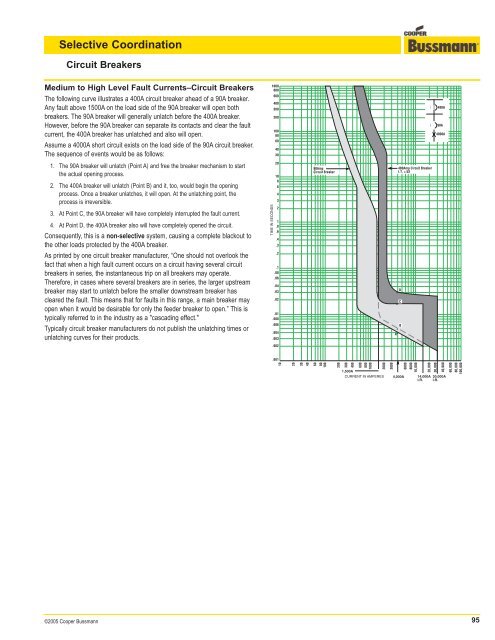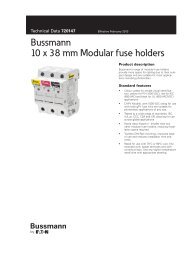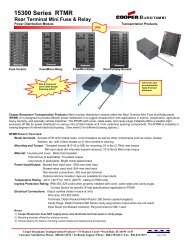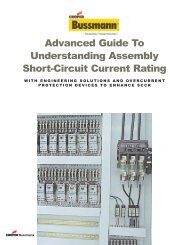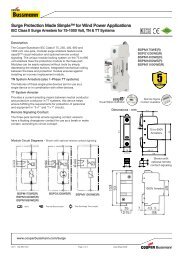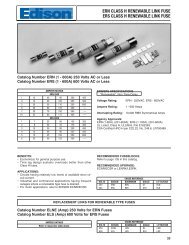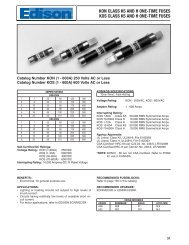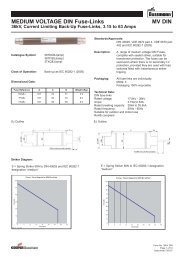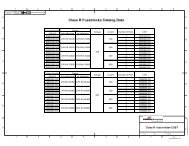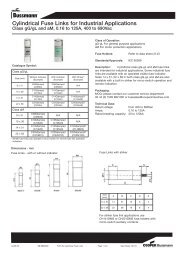Selective Coordination - Cooper Bussmann
Selective Coordination - Cooper Bussmann
Selective Coordination - Cooper Bussmann
You also want an ePaper? Increase the reach of your titles
YUMPU automatically turns print PDFs into web optimized ePapers that Google loves.
<strong>Selective</strong> <strong>Coordination</strong>Circuit BreakersMedium to High Level Fault Currents–Circuit BreakersThe following curve illustrates a 400A circuit breaker ahead of a 90A breaker.Any fault above 1500A on the load side of the 90A breaker will open bothbreakers. The 90A breaker will generally unlatch before the 400A breaker.However, before the 90A breaker can separate its contacts and clear the faultcurrent, the 400A breaker has unlatched and also will open.Assume a 4000A short circuit exists on the load side of the 90A circuit breaker.The sequence of events would be as follows:100080060040030020010080604030400A90A4000A1. The 90A breaker will unlatch (Point A) and free the breaker mechanism to startthe actual opening process.2. The 400A breaker will unlatch (Point B) and it, too, would begin the openingprocess. Once a breaker unlatches, it will open. At the unlatching point, theprocess is irreversible.3. At Point C, the 90A breaker will have completely interrupted the fault current.4. At Point D, the 400A breaker also will have completely opened the circuit.Consequently, this is a non-selective system, causing a complete blackout tothe other loads protected by the 400A breaker.As printed by one circuit breaker manufacturer, “One should not overlook thefact that when a high fault current occurs on a circuit having several circuitbreakers in series, the instantaneous trip on all breakers may operate.Therefore, in cases where several breakers are in series, the larger upstreambreaker may start to unlatch before the smaller downstream breaker hascleared the fault. This means that for faults in this range, a main breaker mayopen when it would be desirable for only the feeder breaker to open.” This istypically referred to in the industry as a "cascading effect."Typically circuit breaker manufacturers do not publish the unlatching times orunlatching curves for their products.TIME IN SECONDS2010864321.8.6.4.3.2.1.08.06.04.03.02.01.008.006.004.00390AmpCircuit Breaker400Amp Circuit BreakerI.T. = 5XD•C•B•A•.002.001102030406080100200300400600800100020001,500ACURRENT IN AMPERES30004,000A6000800010,00020,00030,00040,00060,00080,000100,00014,000A 30,000AI.R. I.R.©2005 <strong>Cooper</strong> <strong>Bussmann</strong>95


